Overview of Shipping from China to India
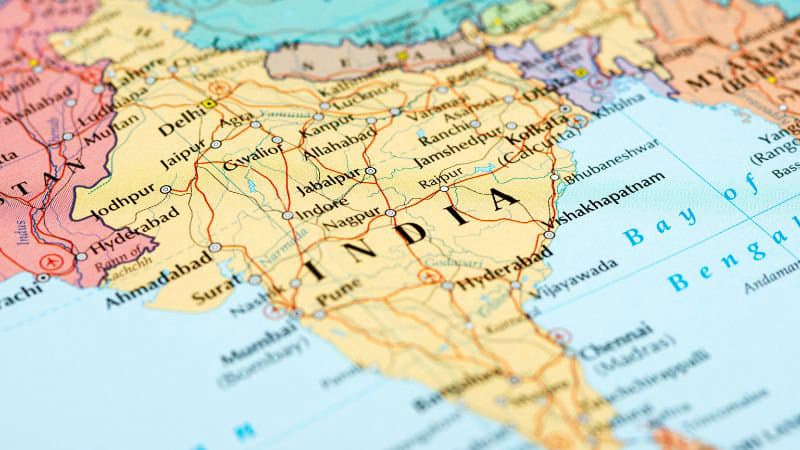
In exploring the logistics of shipping from China to India, you’ll find multiple modes of transportation and several main ports and airports that serve as hubs for cargo movement. Your choice of shipping mode will depend on factors such as speed, volume, and cost.
Modes of Transportation
When considering shipping goods from China to India, you have two primary modes of transportation: air freight and sea freight.
- Air Freight: If you’re looking for speed, air freight is your quickest option. The transit time for air freight from cities like Guangzhou, Shenzhen, or Shanghai to major Indian airports such as Indira Gandhi International Airport in Delhi can range from 3 to 8 days. This mode is ideal for high-value, low-volume, or time-sensitive shipments.
- Ocean Freight: For larger volumes and less urgent shipments, sea freight from China to India is the more economical choice. Shipping via ocean can take 14 to 24 days, depending on the specific sea routes and schedules. Major ports in this trade lane include Shanghai, Qingdao, and Tianjin in China, and Jawaharlal Nehru Port in Maharashtra, Mundra in Gujarat, and Chennai, Mumbai, Kolkata, and Visakhapatnam in India.
Cargo and Container Options
When importing from China to India, you have several cargo and container options, each with their own benefits. Depending on the volume and nature of your shipments, you may choose between Less than Container Load (LCL) or Full Container Load (FCL), while specialized cargo may necessitate distinct handling methods.
Less than Container Load (LCL)
With LCL, your goods share container space with items from other shippers. This is cost-effective if you’re transporting smaller volumes that do not require a full container. LCL shipping is typically chosen for cargo volumes less than 2 cubic meters. It allows you flexibility in shipping smaller quantities without waiting to fill up a whole container.
- Pros of LCL:
- Reduces costs for small-volume shipments.
- Offers flexibility for shipping smaller amounts more frequently.
- Cons of LCL:
- Longer transit times due to consolidation.
- Greater risk of damage or loss as your goods are handled more often.
Full Container Load (FCL)
FCL means your products fill an entire container, either a 20 or 40-foot container. This is more economical for larger shipments and is preferred if you want exclusive use of container space. FCL shipping ensures that your goods are only handled at the point of origin and destination, leading to fewer risks during transit.
- Types of FCL Containers:
- 20 ft Container: Best for cargo roughly equivalent to 10 pallets.
- 40 ft Container: Accommodates about 20 pallets’ worth of goods.
- Pros of FCL:
- More cost-effective for large shipments.
- Less handling of goods, hence lower risk of damage.
- Quicker transit times as no consolidation is required.
- Cons of FCL:
- Not cost-effective for smaller shipments.
- Requires significant storage space at both origin and destination.
Main Ports in India and China
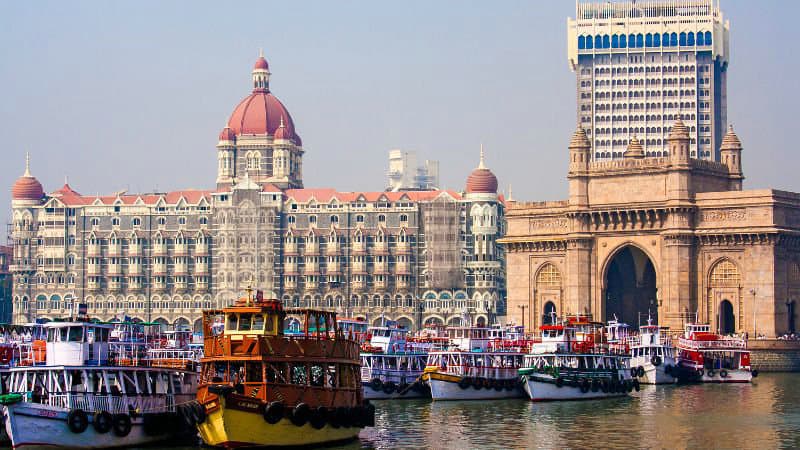
When you’re importing from China to India, it’s essential to know the major ports in both countries, as they are pivotal for international trade.
In China, some of the key seaports include:
| Country | Port | Key Facts |
|---|---|---|
| China | Port of Shanghai | – World’s largest container port – Handled over 40 million TEUs in 2019 |
| China | Port of Shenzhen | – One of the world’s busiest container ports – Handled over 25 million TEUs in 2019 |
| China | Port of Ningbo-Zhoushan | – World’s largest port by cargo tonnage at 1 billion+ tons annually |
| China | Port of Qingdao | – Major port in eastern China – Handled over 18 million TEUs in 2019 |
Main air ports in China include:
| Airport | Introduction |
| Beijing Capital International Airport (PEK) | Located in Beijing, it is China’s busiest airport and main international aviation hub, with flights to over 230 destinations. It served over 100 million passengers in 2019 across its three terminals. PEK links China to major cities globally. |
| Shanghai Pudong International Airport (PVG) | Located in Shanghai, it is one of China’s largest airports, serving over 80 million passengers in 2019. With two terminals, it offers flights to about 210 destinations, including key cities in China, Asia, Europe, and North America. |
| Guangzhou Baiyun International Airport (CAN) | Located in Guangzhou, this airport serves as the main hub for China Southern Airlines. With two terminals, it handled over 70 million passengers in 2019 and offers flights to more than 220. |
On the other side, India has several strategic ports of its own:
Seaports
| Port | Location | Key Exports/Imports |
|---|---|---|
| Mumbai Port | Maharashtra | Largest port; Petroleum, machinery, textiles |
| JNPT Port | Maharashtra | Largest container port; Textiles, chemicals |
| Kandla Port | Gujarat | Crude oil, petroleum, salt, grains |
| Chennai Port | Tamil Nadu | Automobiles, fertilizers, industrial goods |
| Vizag Port | Andhra Pradesh | Iron ore, coal, oil exports |
| Kolkata Port | West Bengal | Iron ore, steel, jute exports |
| Kochi Port | Kerala | Spices, coffee, tea exports |
Airports
| Airport | Location | Passengers (in millions) |
|---|---|---|
| Indira Gandhi Intl | Delhi | 70+ |
| Chhatrapati Shivaji Intl | Mumbai | 48+ |
| Kempegowda Intl | Bengaluru | 33+ |
| Chennai Intl | Chennai | 22+ |
| Netaji Subhash Chandra Bose Intl | Kolkata | 20+ |
| Rajiv Gandhi Intl | Hyderabad | 21+ |
| Cochin Intl | Kochi | 10+ |
Remember, a successful shipment often depends on choosing the right port that aligns with your logistical needs and shipment schedules.
Ocean and Air Cargo Shipping Costs and Transit Times From China to India
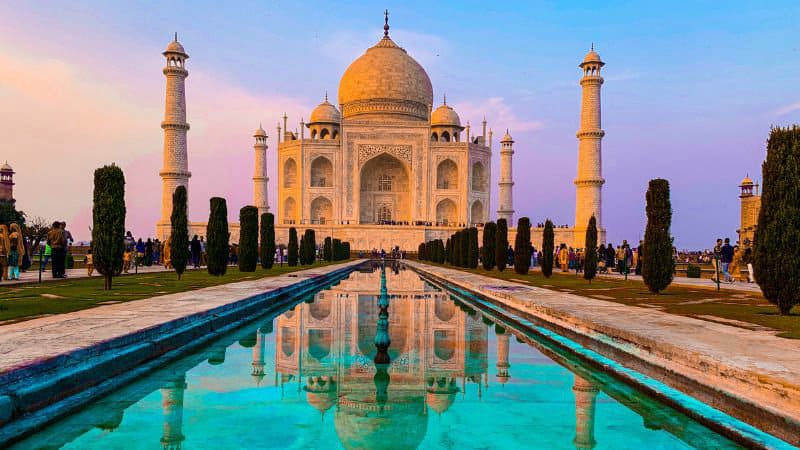
When shipping from China to India, it’s essential to understand that your freight costs and transit times are influenced by a variety of factors, including distance, volume, weight, and shipping routes.
Calculating Freight Costs
To calculate shipping costs, you must consider:
- Volume & Weight: The cost is typically based on the higher of the actual weight and volumetric weight. Volumetric weight is calculated as volume (in cubic meters) multiplied by 167.
- Type of Cargo: General cargo and special cargo (like hazardous materials) have different rates.
- Mode of Shipment: Full Container Load (FCL) is economical for large shipments, whereas Less than Container Load (LCL) may be better for smaller volumes.
- Seasonal Demand: Expect higher rates during peak seasons.
- Fuel Costs and Surcharges: Variable and can affect the overall rates.
Here are the costs:
| Route | Type | Cost |
|---|---|---|
| Shanghai – Mumbai | LCL | $40 – $60 per cbm |
| FCL (20 ft) | $1,200 – $1,500 | |
| FCL (40 ft) | $1,800 – $2,200 | |
| Shenzhen – Chennai | LCL | $35 – $55 per cbm |
| FCL (20 ft) | $1,100 – $1,400 | |
| FCL (40 ft) | $1,700 – $2,100 | |
| Qingdao – Kolkata | LCL | $38 – $58 per cbm |
| Shanghai – Nhava Sheva | FCL (20 ft) | $850 |
| FCL (40 ft) | $900 | |
| Hong Kong – Chennai | LCL | $80 – $150 per cbm |
| FCL (20 ft) | $1,400 – $2,000 | |
| FCL (40 ft) | $2,700 – $3,000 |
*Please note that the rates shown are only estimates to provide an indication of pricing. Actual quotes will vary depending on the specific details of the shipment, such as the goods, weight, dimensions, delivery timeline, and other requirements.
We work with each customer individually to develop customized shipping solutions tailored to your needs and budget. You can expect competitive pricing that aims to deliver great value.
Please contact us to discuss your shipping needs – Luckystar looks forward to putting together an unexpected price for you. We will offer you the cheapest way to ship your goods, we are your most trustworthy shipping company.
Estimating Transit Times
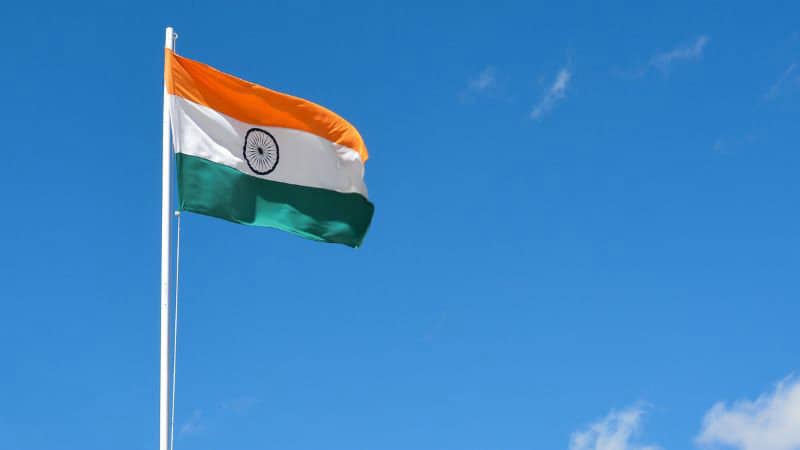
Transit times may vary with:
- Distance: Direct shipping routes from major Chinese ports like Guangzhou to Indian ports like Mumbai are often faster.
- Type of Freight: Air freight is quicker but more expensive, with times ranging from 3 to 8 days. Sea freight takes longer but is more cost-efficient.
- Customs Clearance: This can add time; ensure documentation is in order to prevent delays.
Here’s what you can expect for sea freight transit times:
| Route | From | To | Shipping Time |
|---|---|---|---|
| Sea | Shanghai | Mumbai | 22 days |
| Sea | Shenzhen | Chennai | 15 days |
| Sea | Qingdao | Kolkata | 21-23 days |
| Sea | Shanghai | Nhava Sheva | 22 days |
| Sea | Mumbai | Shanghai | 22 days |
| Sea | Hong Kong | Chennai | 19 days |
| Sea | Guangzhou | Delhi | 12-16 days |
| Sea | Guangzhou | Mumbai | 10-14 days |
| Sea | Shanghai | Chennai | 15-20 days |
Air Freight:
| From | To | Transit Time |
|---|---|---|
| Major airports in China | Major airports in India | 1-2 days flight time + 3-8 days total |
Please note, this information is for general guidance and actual times may vary based on specific circumstances. Always check with your carrier for the most accurate and up-to-date information.
Customs, Duties, and Import Regulations
When shipping from China to India, understanding the intricacies of customs clearance and the calculation of duties and taxes is crucial. The process can influence not just the cost but also the timeline for receiving your goods.
Navigating Customs Clearance
Customs clearance in India involves a series of steps to allow your goods to enter the country legally. You will need to provide a Bill of Entry, which is a declaration of the type and value of goods. Ensure that you have a Certificate of Origin, which verifies where your goods were manufactured. The Bill of Lading, a key document issued by a carrier to acknowledge receipt of cargo for shipment, is also integral to the process.
For a smoother clearance, consider DDP (Delivered Duty Paid) terms, which mean that your seller is responsible for all risks and costs, including duty until the goods are delivered to you. However, always stay updated as regulations may change, and consider hiring a professional custom clearance agent to navigate through the process.
Calculating Duties and Taxes
Determining the import tax and duties on goods shipped from China to India is complex, given it depends on the category of the goods. Here’s a simplified overview to help you predict costs:
- Duty: Calculated as a percentage of the CIF value (Cost, Insurance, and Freight) of the goods.
- Import Tax: Depends on the specific goods, categorized under different HS codes.
- VAT: A value-added tax levied on goods and services.
Use the following table as a guide for you to understand how the CIF value impacts your final cost:
| Component | Description |
|---|---|
| Cost | Price of the actual goods from the supplier in China |
| Insurance | Fee for insuring the goods during transit |
| Freight | Shipping cost from China to India |
Remember, precise tariffs can be obtained using the Indian Customs Tariff website or consultation with a customs broker. For specific goods, you may also need additional documentation or licenses; failing to comply with these requirements can lead to delays and extra charges.
Specialized Cargo Handling
For cargo that needs extra care, such as perishable goods, chemicals, or cosmetics, specialized container options are available, ensuring that your unique cargo arrives in optimal condition. Refrigerated containers can maintain a stable temperature for food products, while tanks or ventilated containers may be the choice for bulk cargo like chemicals.
- Options for Specialized Cargo:
- Refrigerated Containers: For temperature-sensitive cargo like food products.
- Hazmat Containers: Designed for safely transporting hazardous materials.
- Open-Top Containers: Used for over-height cargo that doesn’t fit within standard containers.
Remember, selecting the right type of cargo and container option is crucial to the success of your shipping ventures. Make sure to evaluate the volume, nature, and requirements of your goods to make the most cost-effective decision.
Trade Agreements and Market Entrances
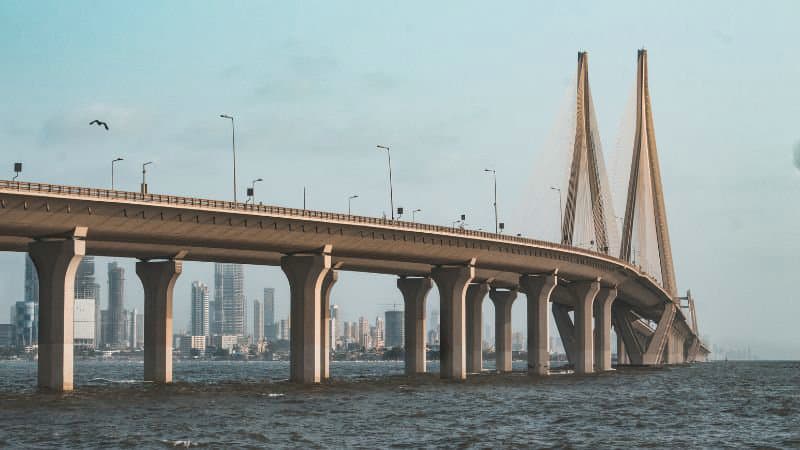
Understanding trade agreements is crucial for any business looking to ship goods from China to India. These agreements can significantly affect tariffs, market access, and even the choice of ports or airports for entering the Indian market.
General Agreement on Tariffs and Trade (GATT)
The General Agreement on Tariffs and Trade (GATT), which both China and India are parties to, provides a framework for international trade. It aims to reduce barriers to trade, like tariffs and import quotas, and to encourage fair competition. When shipping, you’ll find that GATT can influence the duties imposed on your imported goods, such as raw materials from China.
- Import duties: Adjusted for products under GATT rules, potentially lowering costs.
- Consistency: Ensures a more predictable international trade landscape.
Needed Documents
- Commercial Invoice: This document provides details like the seller, buyer, product description, quantities, unit prices, etc. Needed to determine customs duties.
- Packing List: Provides specifics of all items in the shipment like description, quantities, weight, dimensions, etc. Helps customs inspection.
- Bill of Lading/Airway Bill: Serves as a shipment receipt and contract between the exporter and shipping carrier. Details the goods for transport.
- Other Supporting Documents: Certificate of origin, import/export code, insurance certificate, product safety/health certificates, etc.
- Certain products like automobiles, steel, medical devices have stringent import standards in India that require compliance to labeling, packaging and BIS quality norms.
- Wildlife products, hazardous materials, maps depicting incorrect boundaries etc. are prohibited imports into India.
- An Importer Exporter Code (IEC) is mandatory for anyone wanting to import goods into India. It can be easily obtained by submitting the required documents.
Prohibited and Restricted Items
When you’re shipping from China to India, it’s essential to know that certain items are fully prohibited, while others may be subject to restrictions. India maintains a stringent policy regarding the import of goods to ensure safety, environmental conservation, and adherence to intellectual property laws.
Prohibited Items: These items cannot be imported into India under any circumstances.
- Counterfeit and pirated goods
- Goods infringing on legal intellectual property rights
- Meat and edible meat offal of wild animals
- Items deemed hazardous to public safety and morals
Restricted Items: These goods can be imported but are subject to specific conditions or require permits.
- Horses (Restriction: Special permits required)
- Asses (Restriction: Special permits required)
- Certain types of footwear, including sandals (Restriction: Subject to quota or license)
Tips for Compliance:
- Always check the latest version of the Prohibited & Restricted Items list on India’s Directorate General of Foreign Trade website.
- For detailed information on restrictions and licenses required, consult the Central Board of Indirect Taxes and Customs (CBIC).
Remember, regulations change, and it’s important to stay informed to avoid delays or legal issues. If you’re uncertain about the item you intend to ship, seek guidance from customs experts or logistics providers specializing in the China-India trade route.
Tax and Fees
When shipping from China to India, understanding the applicable taxes and fees is crucial to manage your budget effectively. Here’s what you need to consider:
Import Duty: India imposes an import duty on goods coming from China, which varies depending on the product category. It’s important to check the latest tariff rates for your specific product.
- GST (Goods and Services Tax): This tax is levied on the import of goods and services. The rate can range, so you’ll want to consult the current GST slabs for the accurate percentage.
- Minimum Threshold
- Goods valued below $800 are not subject to import duties in India.
- Basic Customs Duty (BCD): Levied based on product type and country of origin. Peak rate is around 10%.
- Social Welfare Surcharge: 10% of the value of imported goods
- Integrated Goods and Services Tax (IGST): Levied on inter-state supply and imports. Rates vary from 0-28%.
- Import duties are calculated based on the assessable value of imported goods, excluding shipping costs.
- Formula: Assessable value x (BCD% + Surcharge% + IGST%)
- Goods below $800 value
- Special Economic Zones
- Bonded Warehouses
- Items covered under Free Trade Agreements
- Automatically calculated and intimated by customs authorities
- Can be paid before goods arrive through shipping invoices
How to Select a Freight Forwarder
When shipping from China to India, your choice of a freight forwarder is critical. They not only handle the logistics of your shipment but also provide valuable support throughout the shipping process.
Assessing Reliability and Services
To ensure successful shipping, evaluate the reliability and range of services offered by potential freight forwarders.
Key Services to Consider:
- Ocean and air freight options: Determine if they offer both to match your shipping needs.
- Door to Door delivery: See if they manage the entire transportation from the factory to your doorstep.
- Warehousing: Check for warehousing services which can be crucial for storage needs before or after shipment.
- 24/7 Customer support: Look for a team that promises round-the-clock support, indicating a high level of service commitment.
Remember, a freight forwarder’s network and their ability to handle complex customs procedures are key indicators of their reliability. Track records, customer reviews, and their ability to provide clear, instant quotes can also help gauge their professionalism.
Why Choose Us? Luckystar Logistic
Established in 2022, Luckystar is an esteemed member of the Federal Maritime Commission (FMC) and operates as a Non-Vessel Operating Common Carrier (NVOCC). Our mission is to deliver superior service quality at reduced costs, primarily serving China, the USA, Canada, and Europe. With core team members boasting over 20 years of experience in logistics, Luckystar brings considerable expertise to the table. Since its inception, the company has been dedicated to offering global door-to-door transport and logistics solutions, emphasizing dependability, adaptability, and responsiveness.
We’re not just a company; we are experts in transportation! Offering industry-leading solutions, we take pride in providing premium shipping services at a fraction of the cost of other freight forwarders, both in China and across the globe. Here’s why partnering with us is the smart move:
Accuracy You Can Count On:
Say goodbye to delivery delays and hello to timely delivery, which is vital for businesses needing to deliver goods swiftly to their customers.
Your Passport to Global Reach:
Our wide network of delivery destinations virtually covers the entire globe, offering extraordinary opportunities for businesses aiming to expand their reach. You can be assured that your package will find its way to almost any corner of the world, taking your business global!
Track with Ease:
Say goodbye to guesswork. Our stringent procedures afford you a live tracking mechanism, making it easy for you to follow your shipment’s progress at every stage of its journey. Stay informed and enjoy peace of mind, knowing exactly where your shipment is anytime you need to know.
Personalized Service, Every Step of the Way:
One of our dedicated team members will personally oversee your shipment from start to finish. This, coupled with our commitment to transparency and constant communication, ensures you are kept updated on the progress of your cargo every step of the way.
When shipping hazardous materials, it’s crucial to work with experienced service providers to ensure that your shipment is handled safely and efficiently. By partnering with us, you can have peace of mind knowing that your shipment is in good hands.
Are you looking for an experienced freight forwarder to assist you in shipping? Contact us. We’re always ready to help. Offering the unbeatable cheapest shipping rates for international shipping, our services are more affordable than you’d believe. Don’t hesitate! Get in touch with us today and get your best freight service from China to India.
